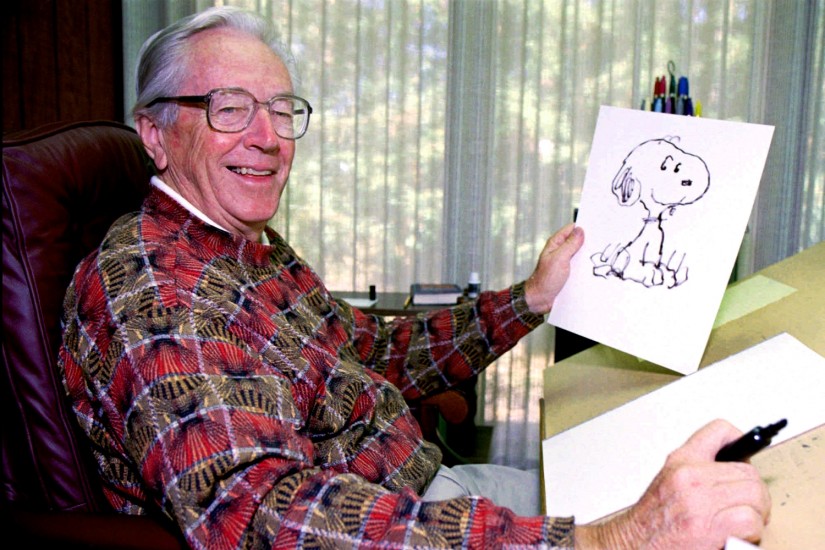In 1950, the comics page was a more or less settled territory into which very few new features could be shoehorned, and, from the get-go, “Peanuts” was marketed as a space-saver. The strip was created out of four equally sized panels, which allowed it to run horizontally, vertically, or stacked two by two. The simple, almost typographical reduction of the “Peanuts” characters—the inflated heads and the shrunken bodies—not only saved editorial-column inches but created room for the words in the strip to be legible. This requirement, nearly alchemically, also enabled the transplanting of the children of “Peanuts” out of a seen, external world of people and places and into a minimalist, abstract, remembered, and internal world. Who would’ve thought that such a hard-nosed commercial decision would catalyze one of the greatest works of popular art of the twentieth century?
Indeed, the earliest “Peanuts” strips almost seem to take smallness as its peeved raison d’etre, a sort of humiliation that the characters must suffer in a space unaccommodating to their bigger ideas, urges, and emotions. The “Peanuts” characters evolved rapidly right before readers’ eyes during the first two years of the nineteen-fifties. Schulz instinctively allowed just the tiniest bit of realism back into their proportions and postures, and somehow, I think, ineffably shaped them within the idiosyncrasies of his own handwriting. By 1954, Schulz was so masterfully intuiting and internalizing his characters that they seemed to burn the page, modulating between whispers and cataclysmic eruptions so violent that the panels could barely contain their fury. The blank, everyman Charlie Brown of the earliest strips gave way to a self-doubting loser; Lucy developed into a tormentor, while her younger brother, Linus, eventually became the strip’s philosopher.
